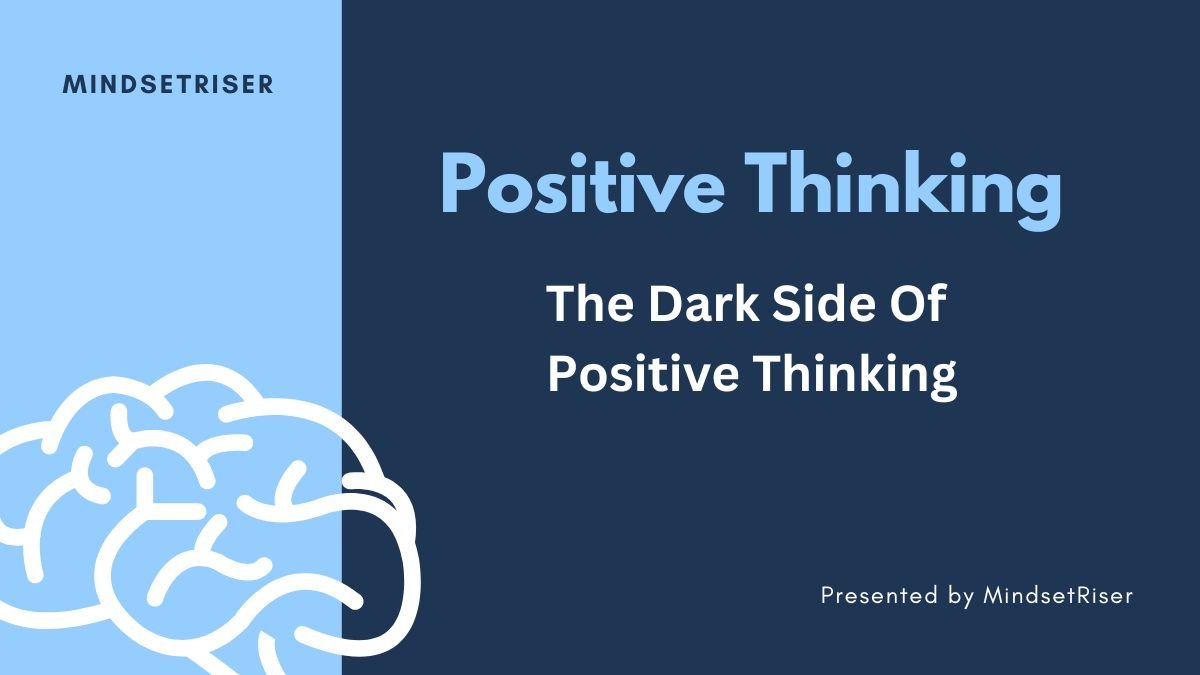The Dark Side of Positive Thinking (What Nobody Tells You)
🔥 The Lie You’ve Been Sold
Close your eyes. Imagine your dream life.
See it. Feel it. Believe it.
Now—poof!—it magically appears.
That’s the promise of “positive thinking.”
But here’s the brutal truth:
For every person who visualized their way to success, there are thousands who ended up more frustrated, more stuck, and more disillusioned than ever.
Why?
Because blind positivity is a trap.
And today, we’re exposing it.
🧠 Part 1: The Toxic Truth About Positive Thinking
1. The “Law of Attraction” Scam
The secret? There is no secret.
- Study: A Journal of Experimental Psychology paper found that visualizing success without action actually reduces motivation.
- Why? Your brain gets a dopamine hit from the fantasy, tricking you into feeling like you’ve already succeeded.
- Real-Life Example:
- Jake spent years “manifesting” his dream job. He vision-boarded, affirmed, and waited… while his peers took internships, built skills, and got hired.
The Fix:
- Swap “I will be successful” → “What’s one step I can take today?”
- Use visualization as fuel—not a substitute—for action.
2. Toxic Positivity: When Good Vibes Go Bad
“Just be happy!” is the worst advice you can give a depressed person.
- Science: A University of Queensland study found that suppressing negative emotions increases stress and anxiety.
- Real-Life Example:
- Sarah’s friend died. People told her, “Stay positive!” So she bottled her grief—until she had a panic attack at work.
The Fix:
- Negative emotions are data. Ask: “What is this trying to tell me?”
- Practice emotional agility (Susan David’s work)—feel it, label it, then choose your response.
3. The “Fake It Till You Make It” Disaster
Confidence is good. Delusion is dangerous.
- Study: Berkeley Research found that people who overestimated their abilities made riskier decisions and failed harder.
- Real-Life Example:
- Mike “faked” confidence in his startup pitch. Investors saw through it. Meanwhile, his humble competitor got funded by saying, “Here’s what we don’t know yet.”
The Fix:
- Confidence = Competence + Honesty.
- “I’m not perfect at this yet, but here’s my plan to improve.”
⚡ Part 2: How to Think Better Than “Positivity”
1. The Stoic’s Secret: Negative Visualization
The ancients had it right. Preparing for the worst > pretending it won’t happen.
- Practice: Spend 5 minutes/day imagining:
- What if I fail?
- What if I get rejected?
- Why it works: Reduces fear of the unknown.
2. The 70/30 Rule
- 70% realistic, 30% optimistic.
- Example:
- “I’ll probably face setbacks (70%), but I’ll adapt and find a way (30%).”
- Example:
3. The “Anti-Goal” Method
Instead of obsessing over success, focus on avoiding failure.
- Example:
- Goal: “Lose 20 lbs.” → Anti-Goal: “Don’t gain 20 lbs.”
- Why it works: Less pressure, more sustainable.
💡 When Positivity Helps (And When It Hurts)
✅ Use positivity: To boost motivation after taking action.
❌ Avoid positivity: To avoid hard truths or suppress emotions.
🚀 Your Challenge
For 7 days:
- Notice toxic positivity (in media, conversations).
- Practice negative visualization (5 mins/day).
- Share your insights in the comments.
(What’s your experience with “positive thinking”? Did it help or backfire?)
📌 Key Takeaways
✅ Blind positivity kills motivation.
✅ Negative emotions are signals—not enemies.
✅ Stoic realism > toxic optimism.
✅ Action + honesty > “manifesting.”

